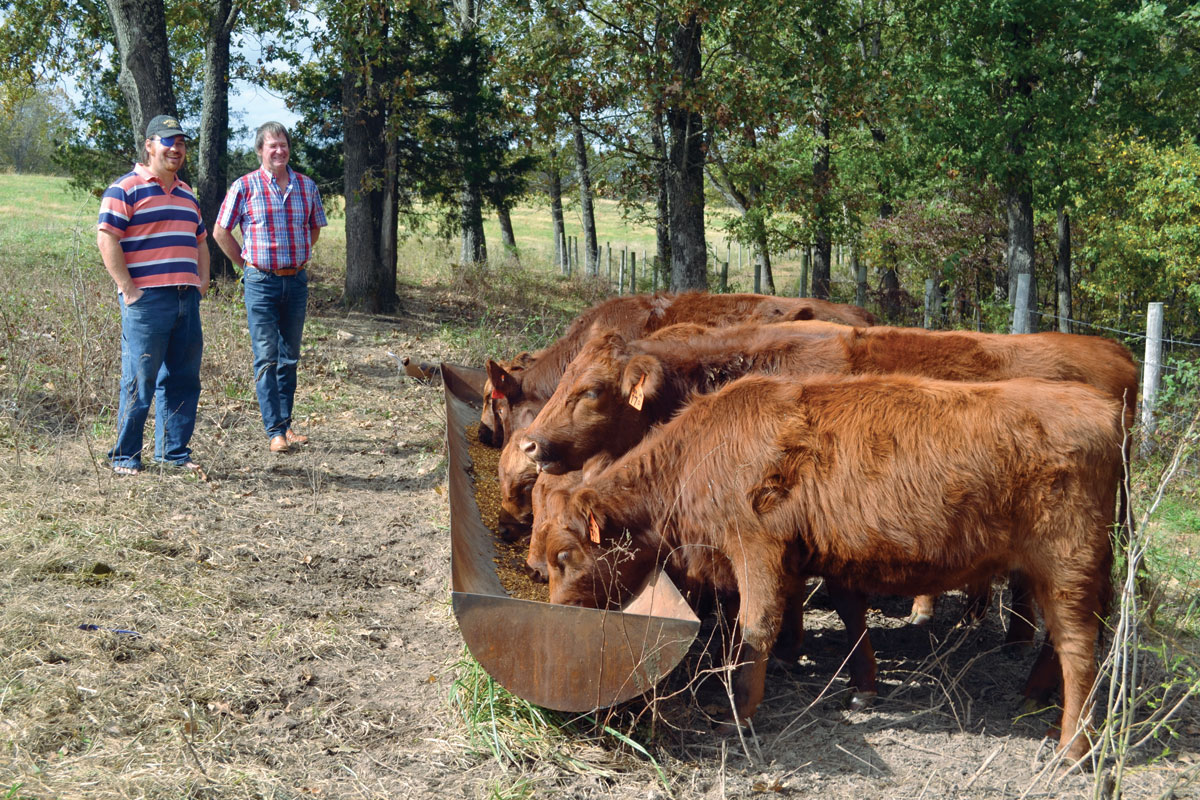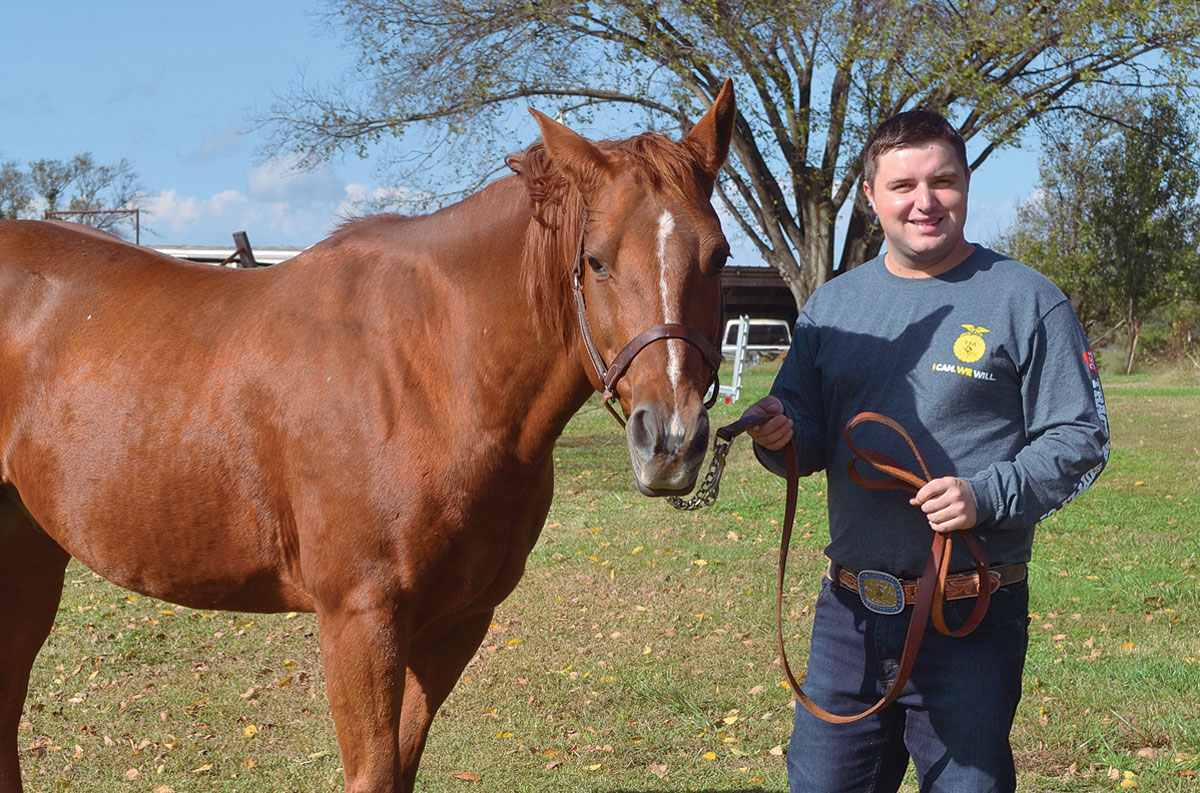
After selling his sawmill, Ivan Westover spends his days working with his Angus cattle
Many years ago, Ivan Westover got some advice from a longtime cattleman named Jim McGuire.
“He said, ‘When are you going to get some black cattle?’” Ivan recalled.
Ivan followed Jim’s advice and decades later, Ivan and is wife, Joyce, have about 200 Angus momma cows and heifers.
“He knew cattle really well. He picked out all of my bulls. I’d tell him I needed a bull and he’d find me one. He did that for 20 years or more.”
“He said I needed llamas too, and I have llamas,” Ivan’s wife Joyce added. “They’re still there.”
“Our herd keeps getting bigger and bigger with them too,” Ivan said with a laugh.
Jim passed away a couple of years ago, but the descendents of the Angus cattle he helped introduce into the Westover herd continue to roam the pastures of Ivan’s and Joyce’s farms near Amoret, Mo., in Bates County. The herd runs on 700 acres, 600 of which they own.
“Every cow I got, I raised,” Ivan said. “I buy my bulls, but I raise all of my own heifers. When I first started, they were all registered, but I got tired of the paperwork. I know which calf is out of which cow and I keep track of that, but the registered side was just too much… I raised registered bulls for about three years, but it turned into a lot of work for me. I didn’t like to sell a bull unless it was tame and working all the time, I couldn’t work with them the way I wanted.”
While Jim McGuire got Ivan into the Angus business, he was no stranger to livestock and farming.
“I had dairy cattle, and I really didn’t like it,” Ivan said with a grin. “I had beef cattle on the side for years. I like the Angus mainly because they bring a better price. I started out with Herefords, but the Angus always brought a premium over the Herefords. If I did any crossbreeding, it would be with a Hereford. I’ve had some black white face over the years and they have done well. Angus are actually a little harder to handle than the Hereford as far as their temperament and don’t grow as fast as some of the other breeds, but they will bring that better price so it’s worth it to me.”
In addition to cattle, Ivan also had row crops, mostly corn and soybeans, but phased that portion of the operation out about 30 years ago.
“I sold the combine, plows, drills, tractors and all,” he said. “I just grow grass now. Financially, I don’t make as much money this way, but I enjoy it much more.”
Ivan operated a South Side Lumber in Butler, Mo., for about 40 years, which he purchased from his parents. He sold it a few years ago and became a full-time cattleman. His wife Joyce had a restaurant for many years as well, but after selling it she became Ivan’s right hand.
“I wasn’t able to get the cows and the land without having the sawmill all of those years,” Ivan said. “When I sold it, I didn’t retire from a job, I retired to a job.”
Westover Farms utilizes all natural cover for its herd, breeding for both spring and fall calves.
“I like spring calves because that grass is coming along about the time the calf is ready to start eating it, and that grass helps the cows boost their milk production a little,” he said. “I can’t get everything bred for spring, so I’ll have some in the fall, about a third of what I have in the spring. I like to have those calves in September, October. I don’t like to have calves in July or August, or January or February; that’s just my opinion.”
He typically has cow groups of 45 to 65 females, running two bulls with each group.
“We used AI for about two years, but if you get too many head, it gets hard to keep things straight,” he said. “I’ve got a guy now who helps me take care of things and it’s just easier for us to use bulls.”
Ivan runs about eight bulls with his herds. A bull that performs well and holds up will remain in the breeding cycle for as long as 10 years, or more.
The Westovers typically sell their calves three months after weaning – which is at about 6 to 8 months, depending on their size – through local sale barns. He may keep calves a little longer, depending on size, and doesn’t like to sell calves in July or August, opting instead to keep them a little longer to add weight. Calves are also offered a 12 to 15 percent protein creep feed, and are vaccinated about two weeks prior to weaning, and given a booster before sale.
Ivan said it’s not unusual for their calves to top sellers.
“It doesn’t matter if the market is high or low, they sell pretty well,” Ivan said.
Ivan typically doesn’t market replacement heifers, but it’s not unusual for other producers to call him and see when he might be sending a load of heifers to town.
“There always seems to be a demand for Angus heifers,” Ivan said.
Ivan does retain a few heifers each year as replacements, but he’s very selective and he bases that selection on the performance of the dam.
“I know which cow she’s out of and if it’s a good cow,” he said, adding that he likes to breed his heifers when they are about 18 months of age, but a larger framed heifer may be bred a little sooner. “If she doesn’t breed the first time, I’ll move her because I have others waiting.”
“He knows his cows,” Joyce added.
As for the future, Ivan said he wants to maintain his current herd level.
“I need to cull things a little closer, but not cut down on my numbers,” he said. “I need to pay more attention to the quality. The current cowherd is very manageable for me.”
He said he doesn’t want to have so many cows that it damages his pastures, which he also hays each year.
“My cows follow the hay,” he said. “I fertilize in the fall with a commercial fertilizer and hay in the spring, then turn the cows in. I try to keep them on fresh grass all summer long, and in the winter. Last year, I didn’t have to feed any hay until the middle of December. I really don’t have any kind of management program for pastures; I just walk the pastures and look at it. I usually will put clover in with my fertilizer, or sometimes some Orchardgrass. I do a little soil testing, but I might not follow that 100 percent, and I drag some of my pastures to help break up the manure. Most of the pastures are fescue, but I just keep moving them around. That’s why I don’t have just one big herd; I have 88 acres here, 100 acres there, so I have to keep things moving.”
Cattle at Westover Farms are also offered free choice mineral, which changes depending on the season. All animals are vaccinated twice a year.
Ivan humbly said he really doesn’t think he’s done a good job raising cattle, and has a tendency to second-guess himself, and he’s leery about buying bulls without Jim’s input.
Joyce said Ivan doesn’t give himself enough credit for the quality of his cattle.
“He really does a good job with his cows,” she said. “You can see the quality of his cattle when you look at them. He works very hard.”






